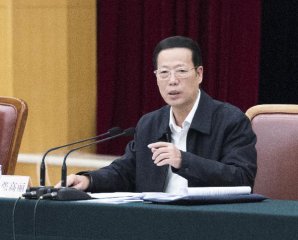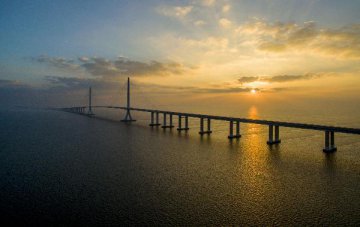
Since the Yangtze River economic belt development is in full swing again, provinces and municipalities in the area have actively integrated into infrastructure construction and regional cooperation and the efforts are expected to help keep China's economy resilient.
The Yangtze River economic belt links the developed in China's coastal area and the backward in the west: the two municipalities of Shanghai and Chongqing and nine provinces of Jiangsu, Zhejiang, Anhui, Jiangxi, Hubei, Hunan, Sichuan, Yunnan and Guizhou. China's State Council, the cabinet, released guidelines on further developing the Yangtze Golden Waterway in September 2014, proposing to build a comprehensive three-dimension transport corridor and in the meantime push forward new-type urbanization.
Experts believe the Yangtze waterway development could balance regional growth and encourage businesses to relocate resources from the crowded coasts areas to less developed inland areas. The first phase of the 12.5-meter-deep waterway project of Yangtze River from Nantong to Taicang in Jiangsu Province has been completed in early December.
The deepwater river route will allow two-way sailing of 50,000 ton bulk cargo ships and tanks riding the tide. As the deepwater route will be extended to upper Yangtze River, basic conditions of water transportation are changing substantially with shipping channel capacities and ports scale expanding.
The second phase of the deepwater route has started and it will go 400 kilometers up along the Yangtze River. Water projects of the middle and upper Yangtze River are also under intense construction in a bid to improve water transportation condition and reduce costs. Moreover, a group of ports, airports, highways and airports projects have been launched and institutions estimate the projects would bring several trillion yuan of investments in the next five years.
In September, at a meeting between Hubei provincial government and central-administered enterprises, nine including China South Industries Group and China Telecom together signed 33 contracts with the province with a total investment of 649.1 billion yuan. S.F.
Express invested 30 billion yuan to build an air cargo hub in Ezhou in Hubei Province, catching the trend of the development of Yangtze River economic belt and taking the geographic advantage of the transportation network. Sichuan province will invest 800 billion yuan in 49 projects to build a three-dimensioned transportation corridor.
Meanwhile, regional cooperation has been steadily pushed ahead and opening up across the river has been deepened. Hubei, Hunan and Jiangxi have realized integration of public health care and housing fund program; Sichuan, Yunnan and Guizhou have launched cooperation in transportation and logistics; several places along the river have also started to integrate tourism resources. With China's economy entering "new normal" and the downward pressure growing, local economies in the Yangtze River reaches remain strong and likely be the new supporting force to China's economy.
In the first three quarters of 2015, combined GDP of the Yangzte River economic belt area rose around 8.5 percent, 1.6 percentage points higher than the national level. Chongqing and Guizou recorded double-digit growth and ranked the top two in the country. Growth of the 10 provinces and municipalities excluding Shanghai were all faster than the average level.
While China is drafting its 13th Five-Year Plan (2016-2020), provinces and municipalities along the river have all integrated the Yangtze River economic belt construction into their plans for the next five years. In Shanghai's five-year plan, it will accelerate construction of the Yangshan Port phase-four project and the Pudong airport fifth runway project, facilitate connection of the inland waterways and inter-provincial highways with Jiangsu and Zhejiang provinces.
In addition, Shanghai will take the construction of the technological innovation center as a chance to enhance industrial innovation capacity, promote integrative development of the informatization and industries, and promote transformation and upgrading of regional industries.
Chongqing, which is on the west side of the belt, plans to invest 18 billion yuan in the next five years to construct a shipping hub in upper Yangtze River reaches. It pledges to build a modern shipping service system by 2020 and expand its shipping capacity to 200 million tons a year or 10 billion yuan per year in shipping transaction volume.





















Latest comments